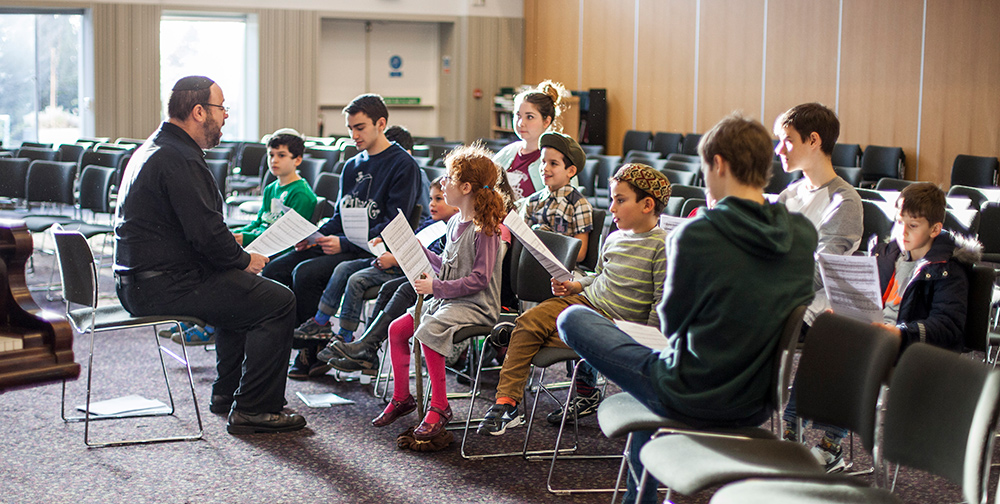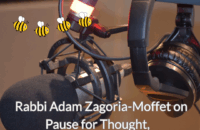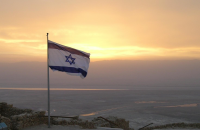Inside, Outside, Somewhere In-between: Sephardic Jews in the 17th Century

The author’s intent, and mine in presenting this alternative narrative, is not to paint Pallache as a duplicitous traitor to Morocco or his sovereign. Instead, he was living through a highly complex juncture in the Jewish world, when Sephardi culture was still reeling from the aftershocks of the expulsion a little over a hundred years earlier that had destroyed the largest Jewish community in Europe. The book contains several references to Spanish Jewish exiles who, unable to cope with the hardships of wandering and poverty in North Africa, returned to Spain, willing to become Christians in order to be allowed to settle again in the homeland of their memory. A number of these, however, went on to become embroiled with the Inquisition for becoming “dogmatizers”, that is, teachers of Hebrew and Jewish practice to conversos eager for Jewish knowledge who remained in Spain and Portugal. The author contends that perhaps, as the city of Fez entered a prolonged decline brought on by civil war and the transfer of the capital to Marrakesh, the Pallache family, with memories of being uprooted from Andalucia, were simply ensuring that there would be a new place of refuge should they need to flee once more. Or perhaps, the trauma of expulsion and the conversion of so many Spanish and Portuguese Jews to Christianity, whether freely or under duress, had made religion a fungible commodity, a contingent identity that could be discarded as circumstances changed.
In any event, Pallache’s overtures came to naught and were rebuffed by the Spanish Crown. Amsterdam becomes the diplomat’s main base, where he is involved in Dutch-Moroccan trade and perceived as a direct channel for communication with the Sultan by many European diplomats in the Dutch Republic. It is during this time that another telling departure from the “official” Jewish story takes place. According to the chronicles of the Amsterdam Jews, Pallache went on to become a pillar of the budding community and its synagogue. The book points out that this claim is unlikely to be true. Pallache was a foreign agent, as representative of the Sultan, and he was required to live in The Hague along with the rest of the foreign diplomatic envoys, far away from the Spanish-Portuguese synagogue. Moreover, a legal dispute between the Pallache family and Baruch Spinoza’s grandfather, the Belgium-based Portuguese merchant Henrique Garcés, seems to undermine the notion of close or friendly ties between the Pallache family and the Spanish-Portuguese Jewish community. The litigation concerned the fate of jewels that belonged to the Pallaches and which they contended Garcés had illegally acquired or come to possess. Isaac Pallache, Samuel’s nephew, went as far as to denounce Garcés before the authorities in Catholic Brussels, exposing him as a secret Jew, a blasphemer who even though baptised was secretly engaged in un-Christian behaviour with other Portuguese merchants. The records show that Isaac Pallache described the Portuguese as “traitors” to their God who should “not be regarded as neighbours and Catholics”, and who went from Brussels to Holland to Venice, professing a different religious law as suited them, “blaspheming” in ways those who were Jews by birth like Pallache could never do because they had not been born into the Christian religion, nor were they educated in it the way the Portuguese conversos had been.
In addition to being hypocritical, given his uncle’s and father’s overtures to the Spanish crown and discussion of the family’s possible conversion to Christianity, Pallache’s accusation against Garcés as a secret Jew is interesting in and of itself, considering the fate of Garcés’s illustrious grandson, Baruch Spinoza. Garcés remained aloof from the organized Jewish community in the Low Countries, first in Antwerp and then Amsterdam, for most of his life and, when he died, had to be circumcised in order to be buried in Oudekerk cemetery. The charges against him were dismissed, but they leave us with a fascinating portrait of a people still uncertain of whether to be inside or outside the Jewish fold. While many in the Amsterdam community were devout and sincere in their quest to become New Jews, there was a persistent and visible minority which, like Garcés or Uriel da Costa and later Spinoza, chose to remain without allegiance. Many historians of the Iberian conversos hold that, having witnessed the extremes of Catholic intolerance and fanaticism, these highly educated individuals developed a kind of critical attitude towards all religion. In the words of historian Yosef Kaplan, they became sceptical “of all religious particularism” and towards religious faith as such. Some credit them with being the first secular Jews in history.
I believe that the converso experience can go a long way to explaining the rise of this new secular stance among the Amsterdam community. But how to account for the heterodox behaviour by Samuel Pallache and his family, or the North African Jews who were willing to become Christians in order to return to Spain, or the well-established fervour for the false Messiah Shabbetai Zvi, who drew thousands of supporters among the Spanish and Portuguese refugees in the Ottoman Empire? Perhaps, the earth-shattering experience of having a whole world blotted out through royal decree, of leaving behind siblings or children and even spouses who chose to remain in Spain and Portugal and become Christian, while they sought refuge in strange lands, left all of these Jews, baptized or not, with a more ambiguous approach to religious identity, a sense that in a world where they could never again be secure in the bosom of extended family and community, they would never again trust in the hard and fast boundaries of old. This is a very particular story of a very particular time, and yet it speaks to our position as Jews today, having to negotiate the boundaries between our secular and Jewish identities, uncertain of being inside, outside, or somewhere in-between.
Gabi Peretz is a member of Kol Nefesh Masorti Synagogue. This is the second part of Gabi’s piece. The first part was published in last Shabbat’s Reflections.
This piece was first published in Kol Nefesh Masorti Synagogue’s Pesach 2017 magazine.
Reflections will occasionally reprint articles written by lay members of our communities and published in the various community magazines, with the aim of giving thoughtful and engaging writing by our members a broader airing.
The pieces chosen for reprinting in Reflections can be on any topic that would be of interest to the broader Masorti community. If you would like to suggest a piece for reprinting, please contact [email protected]. Pieces may have to be condensed to fit the Reflections length restrictions.




